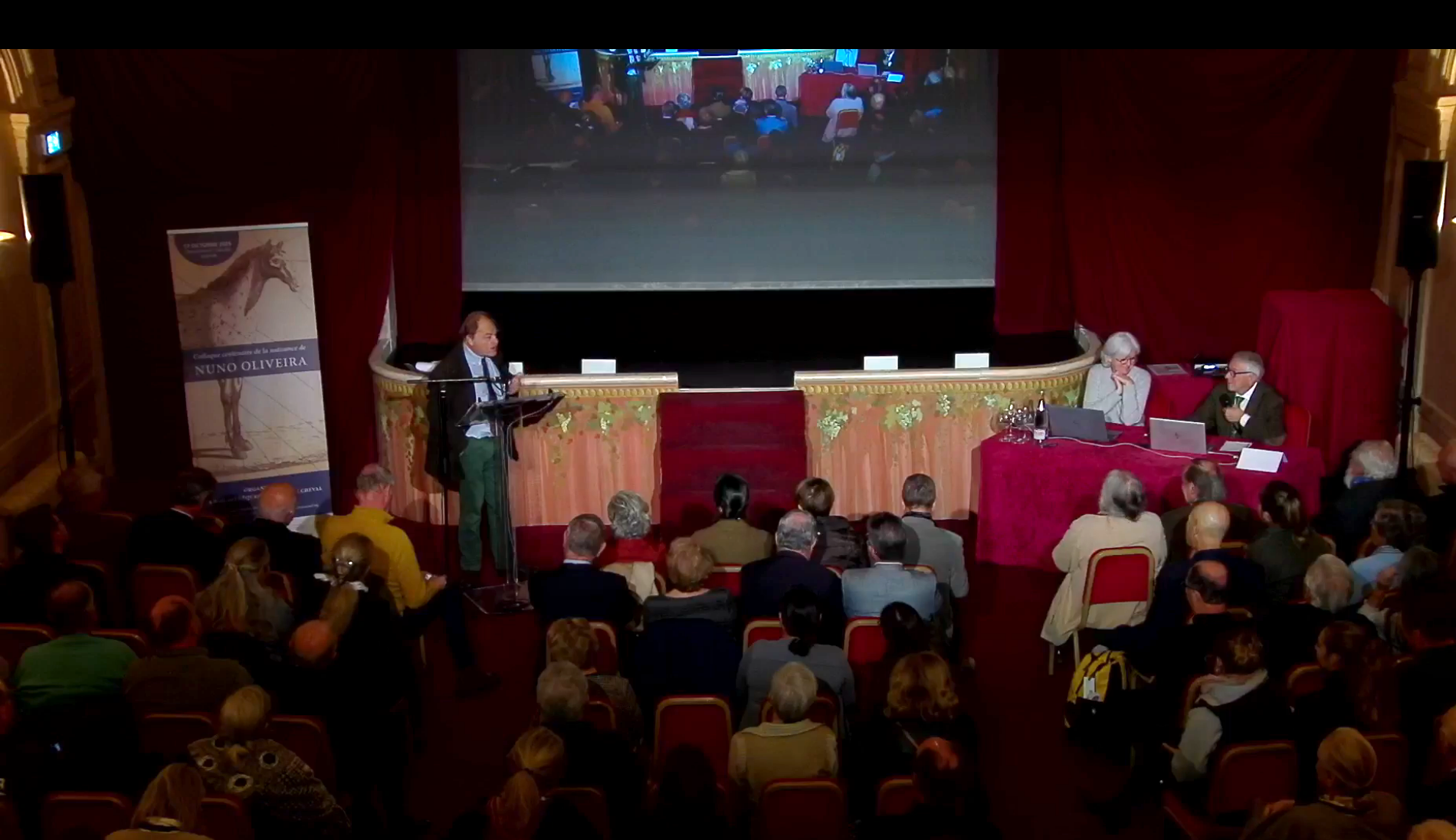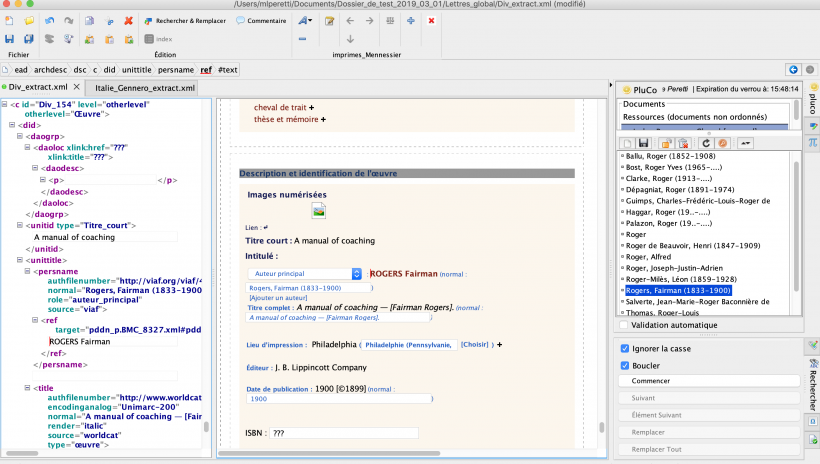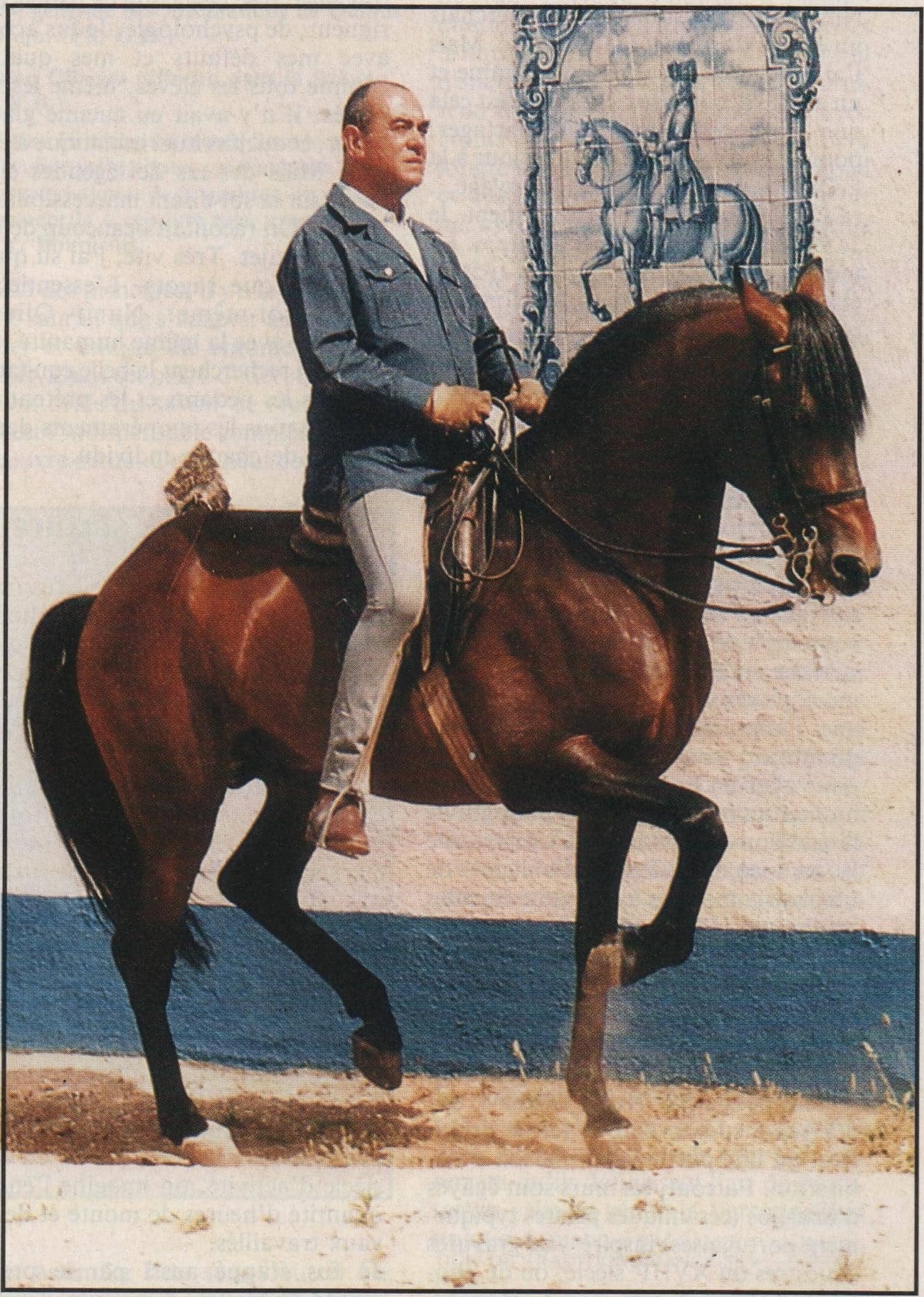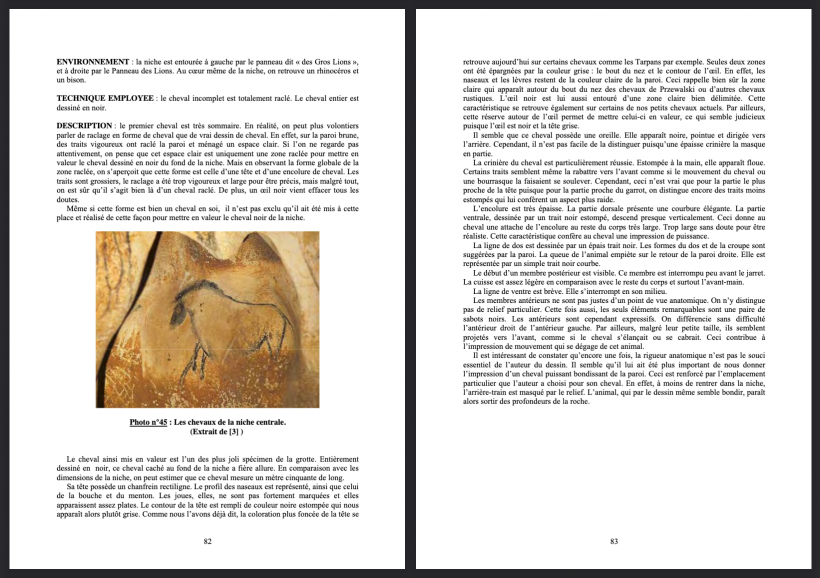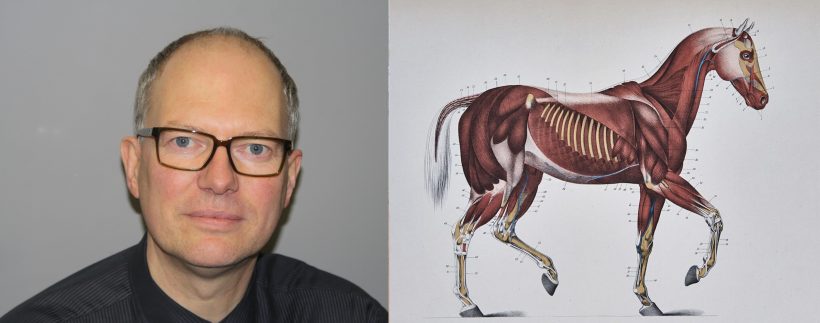
The essential collection of the Leipzig University Library on the horse
Question: – What are the main characteristics of a university library today?
Response of Mr. Ulrich Johannes Schneider, director of the famous library of the University of Leipzig, who gave us the following interview:
It offers a space for study and research and, at the same time, accompanies the third mission of a university: to connect with the public.
A university library is not only at the service of science, but also of scientific culture and, therefore, of democracy. It is an uncensored space for information and the formation of critical thinking, especially in the digital age.
Why this preamble? Because this reminder, this context, this perspective allows us to recognize the importance of the exhibition dedicated to the horse that opened in March 2020 and lasted until November 22. Indeed, the horse deserved and deserves this type of attention, this type of exposure, for the role it has played and is playing in our societies in full technological and digital change, and it is well deserved!
If another more realistic argument were needed, it could be found in the choice of the most emblematic of the 7 spaces of the Leipzig University Library (BUL), that of the “Bibliotheca Albertina”, the largest and oldest building (built in 1891, completely renovated in 2002) which was made to house the treasures of the book collections accumulated by the BUL, especially thanks to transfers from the Dresden library.
Finally, it is worth mentioning the publication of the magnificent book that bears the title of the exhibition (in French) “De la beauté et de la souffrance des chevaux” (On the beauty and suffering of the Horse), edited by Wbg Theiss.
Among the contributions to this beautiful work, it is worth highlighting in particular that of Ulrich Raulff: “The Dresden Veterinary School and its history”, but especially the chapter dedicated to the immense BUL catalog on the horse “From the knowledge of equine veterinarians”, calculated in more than 35,000 pieces, which would make it the most important collection in the world on the subject of the horse.
X. L. – Tell us about the importance of the library at the University of Leipzig. Can you place it – characterizing the object – in comparison with other German or European libraries? Its strengths? Its originality? How will c re or?
U. J. S. – The Leipzig University Library is the richest library in ancient documents on the former East German states (excluding Berlin), which, over the centuries, has grown to significant proportions. It is constantly improving the description of these documents, especially in digital format.
Much of the BUL’s digital collections are available online: the papyrus and ostraca collections, medieval and oriental manuscripts, autographs, portraits, and of course, a large selection of printed books and periodicals.
The BUL considers itself not only a library, but also a cultural institution, and offers a very comprehensive calendar of events and exhibitions. In the last fifteen years more than 50 exhibitions have been organized at the “Bibliotheca Albertina”. 30 of which have had catalogs produced, all of them on a specific website, with a growing audience.
X. L. -Who has physical possession of the works? Do you have a procurement policy? How is it organized (the team) ? How is it financed?
U. J. S. – Since it’s founding in 1543, the BUL has traditionally been considered a service institution for researchers and students, both on-site and today, online. It is fully funded by the State of Saxony with the aim of supporting studies and research at the university. Currently, the BUL offers 3,400 jobs in seven different locations in the city of Leipzig. The most emblematic are the “Bibliotheca Albertina”, the largest and oldest building (built in 1891, completely renovated in 2002) – open every day until midnight – and the “Campus-Bibliothek” (built in 1973, completely renovated in 2009) – open 24 hours a day since 2009 -. Two new buildings have recently been inaugurated: the Educational and Sports Library and the Library of Medical and Natural Sciences.
The BUL makes efforts to obtain external funding: currently, the BUL has about 210 employees working on projects of limited duration, with a budget of approximately 2 million additional euros per year. The BUL operates a “manuscript center” (of which there are a total of six in Germany) dedicated to medieval manuscripts. The BUL is also processing and digitizing its 83,000 coins and other treasures.
X. L. – What is the part of the horse “hypiatria” in this collection? Where does it come from? Can you evaluate this collection in relation to what you know from other collections internationally?
U. J. S. – In 1923, the Dresden Veterinary School (Tierärztliche Hochschule) moved to Leipzig to become a university faculty (Veterinärmedizinische Fakultät). The very rich library of about 35,000 books of the Dresden Veterinary School was then integrated into the BUL library. The models and other teaching materials, such as enlarged color photographs and sketches, were for faculty use.
The faculty area is quite large, about 20 buildings (including one for the specialized library) in one square kilometer. The collection of books on horses is extensive; it seems to me that little material has been published since the invention of the printing press.
X. L. – How is this collection of “horses” distributed? Thematically? Physically (manuscripts, books, theses, brochures, articles)? What part is digitized?
U. J. S. – The Dresden Library is articulated thematically and centered on the horse, according to the catalog published in 1912. Topics include horse anatomy, breeding and riding, pathology and therapy of horses and horseshoes. In addition to books, the collection also includes hippo paintings, prints of exceptional quality, and some rare newspapers. Long before the arrival of the Dresden collections, the BUL had housed many rare books on horses, as well as thousands of essays and reprints from 1855 to 1923.
Regarding the digitization of the collection, the BUL has prioritized – second to conservation – to the paintings used for teaching, that is, to large-format drawings, most of which are made by hand. More than 500 of these paintings have already been digitized and, with the support of the Veterinary School, they will continue to be photographed and posted online.
X. L. – Is there any presence of material from the Maisons-Alfort veterinary school in this collection? Or even from other veterinary schools?
U. J. S. – The Dresden Veterinary Faculty has cooperated with several European partners, which is also visible in the titles of its library. It has received part of its collection through exchanges or by donation. However, there are no books coming directly from the Maisons-Alfort Veterinary School or from other schools.
X. L. – Can you “sketch” a quick picture of the evolution of veterinary art related to the horse and its diffusion through the books that have been dedicated to it over the centuries?
U. J. S. – Caring for animals historically means caring for horses, first and foremost not on an academic or scientific record. The authors of many books had very practical aims and offered very pragmatic advice, with reference to their own experiences or to classical, even ancient, authorities. Little by little a European discourse was established in several languages, intensified by translations, which is revealed in the Dresden collection. It shows, for example, that in the 165 years that elapsed between the first edition of ” L’anatomia del Caballo “, by Carlo Ruini , and the foundation of the Lyon veterinary school, knowledge has not changed significantly. Only with Philippe-Etienne Lafosse and his “ Cours d’hippiatrique ” a new chapter in the history of this knowledge begins, especially with the determination of age through the teeth. Lafosse organized his knowledge according to the organs, which is still done today. His work was translated into German in four volumes and thus the teaching in Dresden was supported. With the scientific progress of the 19th century, new treatments for known diseases became possible.
X. L. – Besides the horse collection, what are the rarities, the treasures of the Leipzig University Library? Can you tell us more about them?
 U. J. S. – In addition to the already mentioned works by Ruini and Lafosse, we must mention “ The Anatomy of the horse ” by the Englishman George Stubbs or the books by Friedrich Wilhelm von Eisenberg . There are also rare works from the 19th century, which we only discovered during the preparation of the exhibition. A German book entitled “ Illustrations for horse diseases visible on the outside of the anima l” (“Bildliche Darstellung, zur Übersicht aller Außen am Pferde möglichst ersichtlich gemachten Fehler und Krankheiten”) still impresses today with the quality of the drawings. The pictures were made in 1842 from paintings by the painter Carl Adolph Heinrich Hess. Another title published between 1838 and 1839 in Weimar is also very rare; his engravings show the daily treatment of horses, especially in the army.
U. J. S. – In addition to the already mentioned works by Ruini and Lafosse, we must mention “ The Anatomy of the horse ” by the Englishman George Stubbs or the books by Friedrich Wilhelm von Eisenberg . There are also rare works from the 19th century, which we only discovered during the preparation of the exhibition. A German book entitled “ Illustrations for horse diseases visible on the outside of the anima l” (“Bildliche Darstellung, zur Übersicht aller Außen am Pferde möglichst ersichtlich gemachten Fehler und Krankheiten”) still impresses today with the quality of the drawings. The pictures were made in 1842 from paintings by the painter Carl Adolph Heinrich Hess. Another title published between 1838 and 1839 in Weimar is also very rare; his engravings show the daily treatment of horses, especially in the army.
X. L. – And to you, personally, what book, work or document do you prefer or are you surprised by? Intrigues you? Bothers you?
U. J. S. – Personally, I am struck by the quality of the horse sketches, detailed and instructive sketches on all parts of the body and all forms of irregularity, disease. They are works of art, made by experts for the teaching of future experts, with great love for animals and a palpable admiration for the body.
X. L. – Do you personally have a taste for old books? Are you a collector? Are you a bibliophile or a bibliophile?
U. J. S. – I have a private library of about 8,000 books, and as a historian of philosophy and a lover of European cultural history, you can imagine that I am more of a bibliophile than a bibliomaniac. I also participate in the largest association of bibliophiles in Germany, the Maximilian-Gesellschaft.
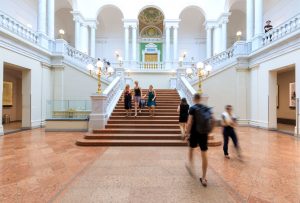
X. L. – Do you have books about horses? A short tour of your library…
U. J. S. – At home there are few books on medicine or natural science, with one exception: a few Swiss engravings of the Physica sacra by Johann Jakob Scheuchzer, published in 1733. I apologize for this, but the subject is … the stomach of Cow!
X. L. – What led you to run a university library? Tell us about your career. Studies, practice, teaching?
U. J. S. – As an academic, I have been working on the history of ideas, knowledge, books and libraries since I finished my studies forty years ago. For more than twenty years I have been working in libraries, first at the Herzog August Bibliothek in Wolfenbuettel. This beautiful place is now home to the largest library of the seventeenth century in Germany, what was then the largest library in Europe, created ex-nihilo , by a single man, Duke August. In this literary environment, I became a librarian and finally became director of the BUL fifteen years ago. I continue to work as a teacher, teaching and writing. But the topics of my work are increasingly inspired by the profession for which I have a certain responsibility to: the library and the world of books.
X. L. – Do you ride horses? ¿Did you ride in another time? If so, tell us about your beginnings (where? When? How?); about this passion for horses!
U. J. S. – Never. When it comes to horses, I’m just a fan.
X. L. – So what about the horse inspires you? The world of horses?
U. J. S. – Before 1900, it is difficult to imagine the world without horses: it was the machine that made the world go round. Without the strength of horses, man could not go anywhere.
X. L. – Do you think (and excuse my optimism) that the horse, its practice, its existence, will continue to make sense in our increasingly urban, digital and virtual societies in the future?
U. J. S. – The horse continues to be an animal close to man, less used (except in sport) than loved and cared for by many. In Leipzig there is a fair every January called “Partner Pferd” – Partner Horse. As soon as they go on sale, tickets for this event sell out quickly.
X. L. – What role can libraries, museums and exhibitions play in this regard?
U. J. S. – Books and everything that testifies on paper to the world of intimate relationships between man and horse will continue to instruct us and remind us of the times when the horse played an existential role for man. In the case of equestrian literature, it is also necessary to preserve the products of advanced crafts to represent and analyze the animals in great detail. The books not only bear witness to themes from bygone eras, but also show us an art that man has developed around the horse.
X. L. – One last word… As a pretext for this interview, tell us about the exhibition you organized on the topic of “Von der Schönheit und den Leiden der Pferde” at the University of Leipzig. Why did you do it? How? With who? What does it mean? What success? What conclusion have you drawn after six months of opening to the public? For the University Library? For you?
U. J. S. – The idea for this exhibition dates back to my knowledge of the Dresden collection. Within the ambitious calendar of exhibitions of the University Library – four exhibitions a year, two of them “large” with catalogs – it has taken several years for the circumstances to be favorable. To make the story short, I first met a historian and writer, Mustafa Haikal, who wrote a 300-page manuscript with over 300 illustrations that is a true masterpiece. 
Then we had to find considerable financial support, because we had planned very early the collaboration with a prestigious publisher. The digitization of the images is still done in our own workshops. During all this time, we collaborate closely with the Faculty of Veterinary Medicine. We did the exhibition with a partner from the university, the “Kustodie”, which has its own art museum, to invite visitors to two separate exhibition rooms. The success was immediate and promising, except for the pandemic crisis that cost us three months of involuntary closure, which was later offset by a three-month extension. The sale of the catalog showed us that the public’s interest in our exhibition went well beyond the city of Leipzig.
Interview by Xavier Libbrecht
See more:
- Leipzig University Library
- Video abut the exhibition “Von der Schönheit und den Leiden der Pferde” (On the beauty and suffering of horses
- Exhibition catalog

